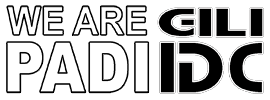Neutral Buoyancy is now fully embedded within the PADI educational philosophy and it seems many scuba diving Instructors will state that they always taught this way or are adapting training programs according, but it’s important to consider what is required by the training agency, what is recommended and what more can be done. Scuba Instructors appear to also be suggesting various methods of implementing it, with some requiring students to assume a fin pivot, some assume a mid-water position and strangely some even opting for a more challenging hovering position.
The program is conducted at the first ever PADI 5 Star IDC Career Development Centre (CDC) established in the Gili Islands offering world class training facilities and situated directly on the beach with dive training sites situated less than 15 minutes journey by boat. Training sites offer variable conditions meaning that instructor candidates will be trained to deal with teaching in the current and more so in a current that may be subject to change in terms of strength and direction allowing new scuba diving instructors to ready to deal with any type of environment they may find in the future.
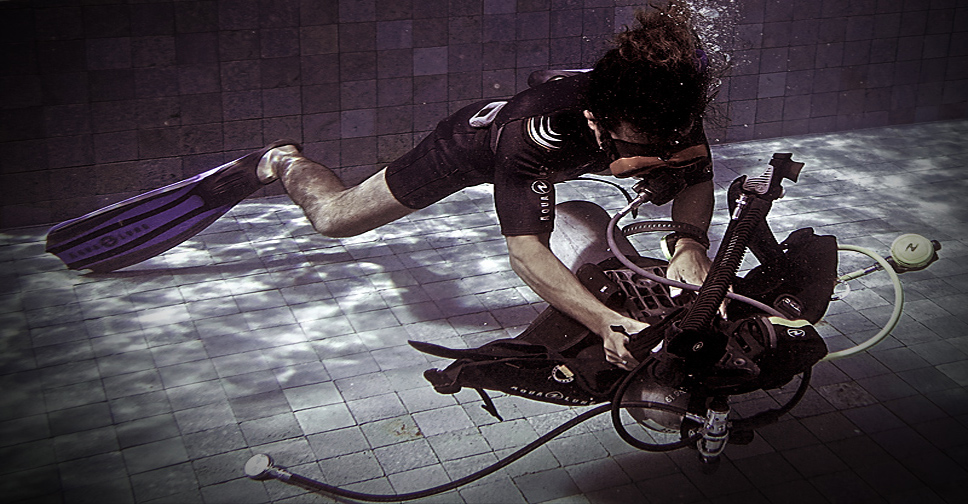
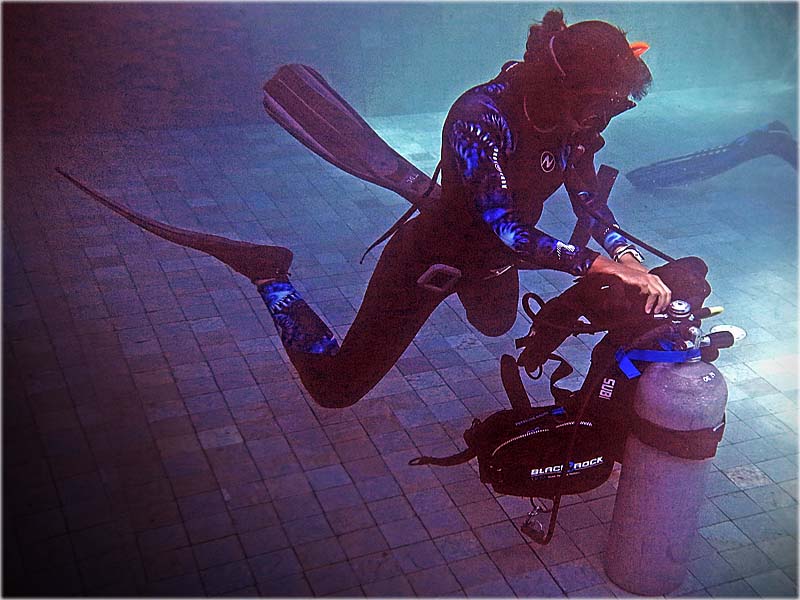
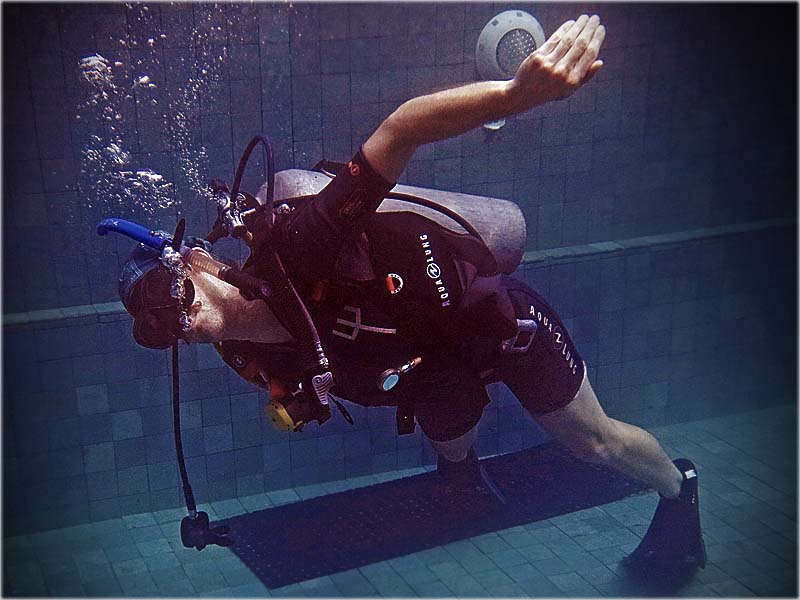
Firstly when looking at body position; this should be in a horizontal position as this is the way in which we all need to be positioned when diving. Suggestions of teaching skills whilst hovering – unless in a horizontal position – could be counterproductive and unnecessarily complicated as there is no occasion during diving that requires a diver to be in a vertical position except for when ascending or positioned on the surface.
Some Scuba Instructors advocate a mid-water position, which in fact is the perfect position for students to practice skills; however within an average sized swimming pool it could become rather unorganized and logistically constrained when dealing with multiple students. Of course then there is confined Open Water, and some might argue that with multiple students and only one instructor it would just add an unnecessary risk element to the training by spreading students out and thus further away from the instructor conducting the training. So all in all mid water is an excellent idea, but the size of the pool and the number of students needs to be considered.
On the PADI Scuba Diving Instructor Development Course (IDC) in the Gili Islands PADI Course Director Holly Macleod will indeed suggest the Fin Pivot technique as it allows the instructor to organize multiple students within easy reach and keep full control of training activities, and of course it would be easy to adapt to mid water should the student numbers be reduced or individual students shows a desire to do so.
Another misconception is that many scuba diving instructors will suggest that they do the entire confined session in neutral, which again is great if feasible. But we do need to consider that during confined dive 1 it is often the first time students have been underwater, worn scuba equipment and breathed underwater and therefore the additional demand of neutral buoyancy could be deemed as unnecessary task loading at this stage. Of course it’s entirely up to the instructor to decide how to organize and conduct training activities and as a basic suggestion PADI Course Director Holly Macleod favours an approach of suggesting a neutral position right from the start of training, but only really encouraging it from confined dive 2 onwards allowing students to focus on getting familiar with the dive equipment, breathing underwater and master those dive 1 skills that are aimed to do exactly this. The suggested practice would also include starting confined dive 2 with the required neutral buoyancy skill and from this point onward encouraging students to assume the neutrally buoyant position as a default position for all further skills ; either within a fin pivot position or mid water if space and confidence permits it.
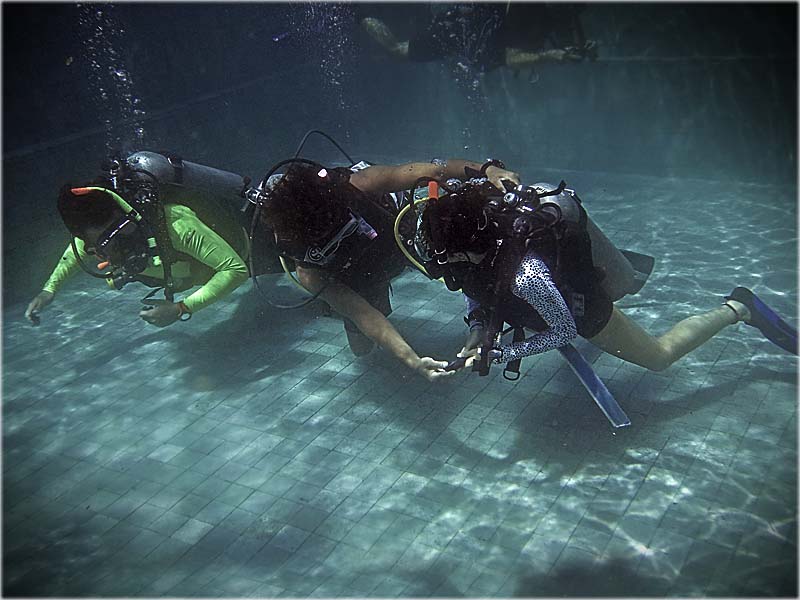
The general idea behind this particular suggested training sequence is that new divers will become immediately confident with the basics of going underwater, breathing and the equipment they are wearing before moving onto buoyancy skills and further to this building upon those skills so as to become fully comfortable in trim with a neutrally buoyant position before proceeding to the open water training segment of the course and in turn creating better divers by the time the course is completed.
During the PADI Scuba Diving Instructor Development Course (IDC) with Industry Leading Multiple Platinum PADI Course Director Holly Macleod professional Divemaster’s are strongly encouraged to fully embrace the PADI IDC Gili Islands Neutral Buoyancy Philosophy. The program itself takes place each and every month at the only ever established PADI 5 Star IDC Career Development Centre (CDC) to be established on the island of Gili Trawangan, Indonesia offering world class training facilities. Holly conducts the entire course from start to finish and offers a wealth of experience with over 17 years working as a PADI Professional and having issued over 3000 Instructor level certifications on the PADI IDC Indonesia in the Gili Islands alone whilst gaining 7 consecutive years of Platinum and Elite 300 Instructor awards. For those serious about a career as a scuba diving Instructor the Gili Islands IDC program with provide the skills, knowledge and confidence to stand out from crowd and become successful in this exciting and dynamic industry.
